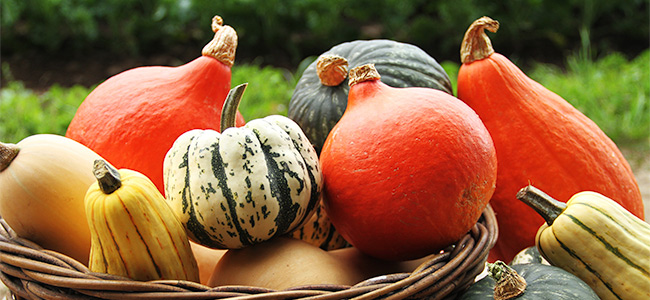6 Things You May Not Know About Growing and Storing Winter Squash

Here are six things your may not know about growing and storing winter squash:
- Winter squash blossoms are not usually harvested or eaten because they tend to be more bitter than summer squash blossoms.
- Winter squash resting directly on soil may be prone to rot. Mound mulch under squash fruits or elevate them on a dry surface such as a wooden board, especially from the time they begin to color until maturity.
- Length of growing season varies widely among varieties of winter squash. The “days to maturity” from seed packets gives a basic guideline but is not always accurate due to variations in weather and growing conditions.
- Attentive gardeners may improve their winter-squash harvest by removing blooms and new fruits that appear late in the growing season, and which may not reach maturity before the plant is exhausted. This will help to encourage growth and quality of existing fruits.
- Most winter squash varieties can be picked early and eaten like summer squash but won’t be as sweet or flavorful as after full maturity and curing. Butternut squash in particular is popular for harvest and eating while immature.
- Curing and a few weeks of storage improves flavor of many varieties including Buttercup, Butternut, Hubbard, and Kabocha.
To view complete instructions for growing winter squash in your area, go to GardenZeus and enter your zip code, then go to winter squash.
Other articles of interest regarding growing winter squash:
Growing Winter Squash and Pumpkins in the California Home Garden
The Garden Zeus Guide to Watering Cucumbers, Melons and Squash (Cucurbits)
Making Friends With Winter Squash: A GardenZeus Guide to Types, Species and Characteristics